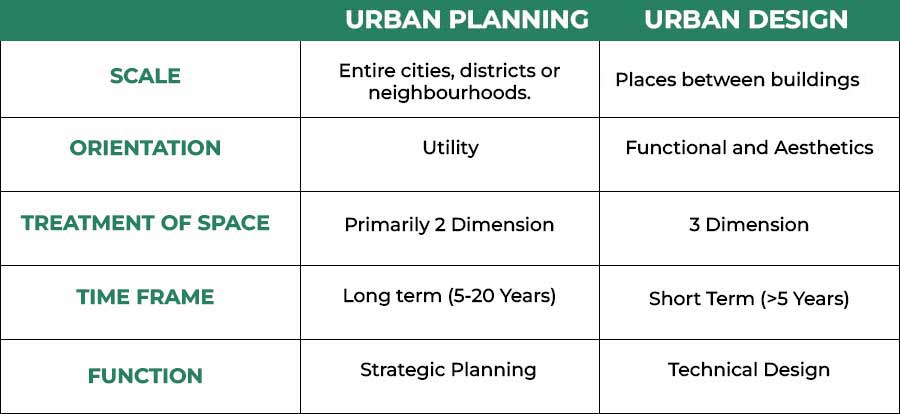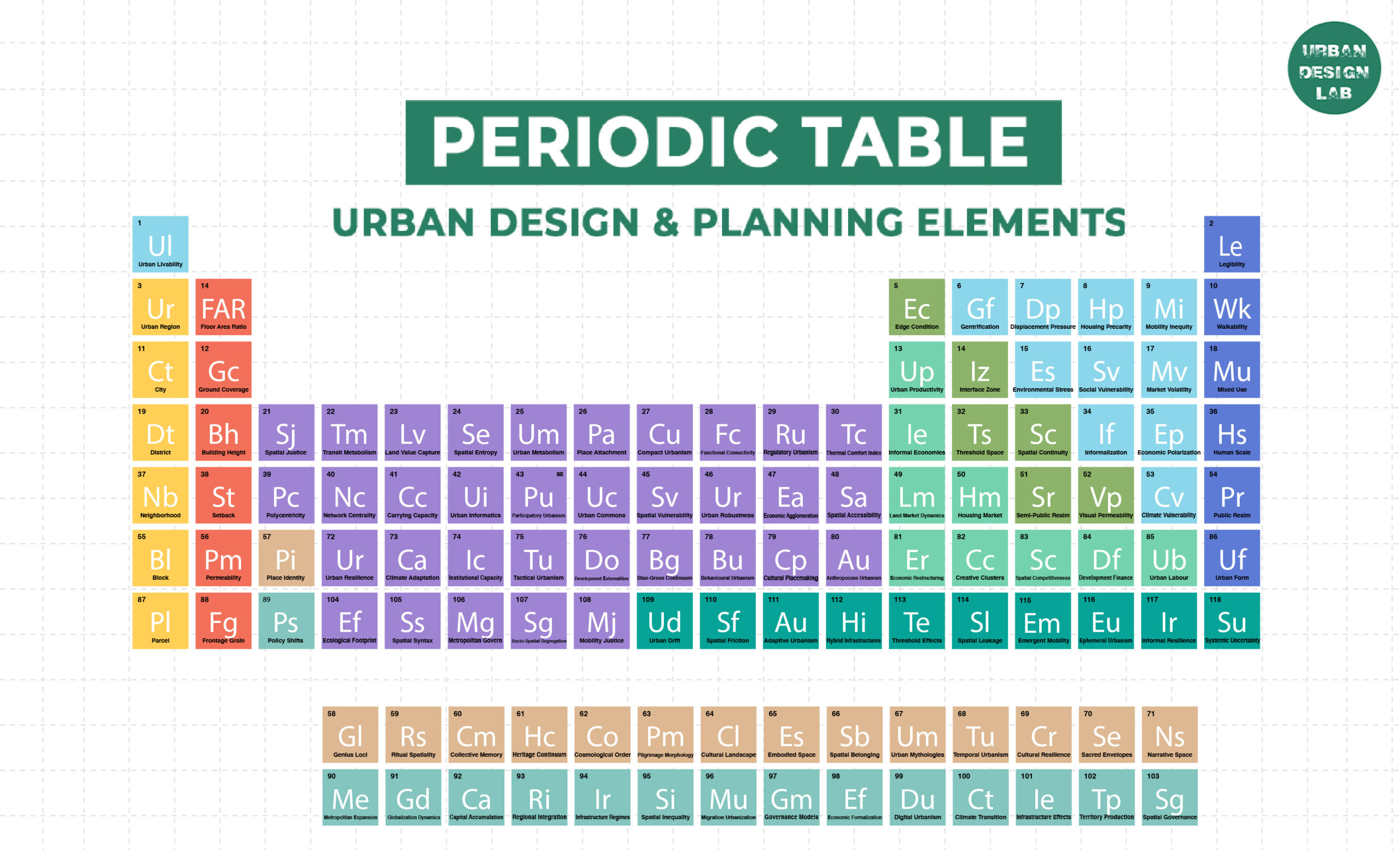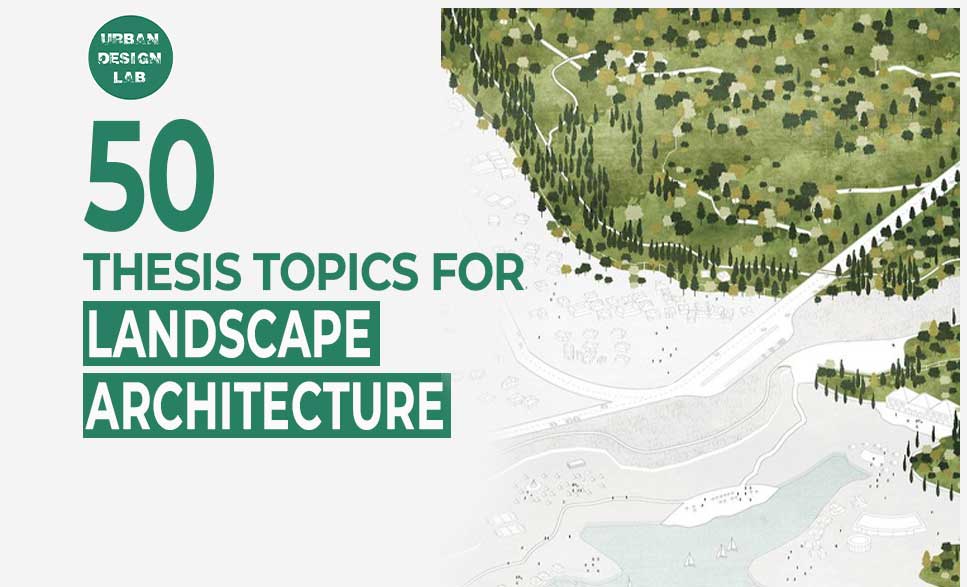
Difference Between Urban Planning and Urban Design

The urban design process has faced criticism for the past 50 years about its definitions, guiding concepts, procedure, and interactions with other disciplines. Urban design initiatives frequently don’t turn out the way they were intended when they are implemented. Similarly, the connection between urban planning and urban design is frequently misunderstood and characterised as ambiguous. Although urban design was developed to close the gap between architecture and urban planning, it is possible that this gap still exists, especially on a theoretical level.
Urban Planning vs Urban Design – Differences Explained
Urban planning is the act of planning the structures of a city, including its policies, infrastructure, neighborhoods, building codes, and regulations. Urban planning, by definition, is the “planning of city strategies, structures and policies.” The focus is more technical and political, and is on the strategy, structure, and policy level.
On the other hand, urban design is the creation of city features based on plans. It includes everything from public space to infrastructure, as well as transportation, landscapes, and community accommodations. Urban design, by definition, is the “design of city features.” It is focused on design and user experience and operates at the features and systems level.
Urban design is used to focus solely on designing individual city features. This could be a transportation system, city park, or wastewater treatment facility. Urban design is for those who want to do creative work. People who want to work on quality of life, population resilience, and sustainability will find a rewarding career as urban designers. Today’s urban planners often work within neighborhoods to create designs that benefit and inspire the community
Even if these two terms have many of the same objectives, they operate on different planes and have different focal points. Both of them strive to build adaptable, sustainable environments that raise the standard of living for local residents, workers, and visitors.
Urban planners are more strategists. They need to evaluate factors that may not necessarily be in their control. From the technical endpoint to political considerations, urban planners need to have a real “big picture” view of what a neighborhood needs. One area where both urban designers and urban planners overlap is in the area of sustainability, long term resilience, and individual quality of life for residential and commercial land tenants

Elements of Urban Design
The foundational elements of urban design are as follows:

Elements of Urban Planning
The foundational elements of urban planning are as follows:

Interrelationships between urban design and other disciplines
Urban Design process is multi-disciplinary in nature and a key element to defining this process is to understand its relationship with other disciplines. The theoretical models offered for design process of urban development’s often shows that the decisions taken throughout the development process are iterative in nature between planning, policies, urban design, architecture etc rather than a linear process.
The Multidisciplinary nature of urban design transformed it into a problem-solving tool for the city with a great responsibility towards the people, place and environment. Urban planning and urban design are described as components of the same process since they are both involved with the arrangement and organization of spaces on different scales .
Urban Planner vs Urban Designer
Typical programmes used in both fields include Geographic Information Systems (GIS) and AutoCAD. While urban planners are more concerned with making sure everything is up to code, urban designers are more concerned with how a space looks and feels.
Urban Planner Career Overview
Urban planners often speak at public gatherings and assess market research data to discover the wants and needs of a city. They are tasked with working alongside land developers and public officials to build out plans for the development of parks and public buildings that the surrounding community will benefit from.
An urban planner must visit proposed sites and assess the achievability of building it out. They work on everything from homeless shelters to areas that will attract new business, as well as public spaces like pedestrian plazas and parks.
Key job responsibilities include:
- Deciding where building zones fall – including commercial, residential and industrial zones. The goal is to make sure land is properly developed for the safety and convenience of residents.
- Staying on top of all local building codes and making sure all plans meet regulations
- Using maps and population densities to analyze data
- Working to protect historic buildings and heritage sites
- By nature, urban planning is more technical. Creativity still comes in to play, although facts and figures remain the leading dictators of this career field
Urban Designer Career Overview
Urban designers stay busy meeting up with a range of clients while relying on programs like AutoCAD, SketchUp, and GIS to develop blueprints for city parks and public buildings.
This career requires a good deal of creativity and artistic vision, as well as the ability to make sure plans are workable. They meet with landscapers, civil engineers and a variety of other professionals to create workable designs. After the project is complete, it is important that the urban designer meets with the client to ensure it covers all of their specifications.
Key job responsibilities include:
Creating a detailed estimate of costs along with a timeline for completion which they then present to their client
Researching areas to create design plans that fit with existing spaces
- Using spatial dimension data to create scaled drawings of a space or building
- Regularly visiting worksites to ensure the project is moving in the right direction and matches up with existing blueprints.
- Meeting with locals and getting to know what they want and need to get the most out of their city.
- Urban designers are more focused on a particular project, while urban planners look at a city on a wider scale.
- An urban designer focuses on individual features of a city such as a pedestrian plaza, transportation system, or community park.
- They use their creativity to get the most out of the space for everyone who will use it. Their work is largely based on the plans and regulations created by an urban designer.
Modern urban designers rely on more community involvement than they have in the past, as this helps produce cities that work for the people who live in them.

Urban Design Lab
About the Author
This is the admin account of Urban Design Lab. This account publishes articles written by team members, contributions from guest writers, and other occasional submissions. Please feel free to contact us if you have any questions or comments.
Related articles


Architecture Professional Degree Delisting: Explained

Periodic Table for Urban Design and Planning Elements


History of Urban Planning in India

Kim Dovey: Leading Theories on Informal Cities and Urban Assemblage
UDL Illustrator
Masterclass
Visualising Urban and Architecture Diagrams
Session Dates
17th-18th January 2026

Urban Design Lab
Be the part of our Network
Stay updated on workshops, design tools, and calls for collaboration
Curating the best graduate thesis project globally!

Free E-Book
From thesis to Portfolio
A Guide to Convert Academic Work into a Professional Portfolio”
Recent Posts
- Article Posted:
- Article Posted:
- Article Posted:
- Article Posted:
- Article Posted:
- Article Posted:
- Article Posted:
- Article Posted:
- Article Posted:
- Article Posted:
- Article Posted:
- Article Posted:
Sign up for our Newsletter
“Let’s explore the new avenues of Urban environment together “











































One Comment